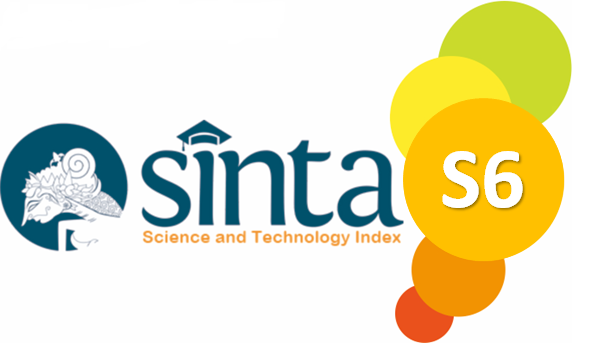ACCREDITATION
Author Guidlines
The author should submit the paper via e-mail and online submission. The content of the article should not be submitted simultaneously to another journal.
How to Prepare a Manuscript
There is no general limitation of the overall size nor the number of figures or the level of details considered to be necessary. However, the appropriate length of a manuscript depends on the information presented in the paper. A manuscript should consist of the following content.
Title
The title should be simple, concise and informative, with only the first word capitalized. A shortened version of the title consisting of a maximum of 100 characters (including spaces) for running headers should also be provided.
Author(s), Name(s), and Affiliation(s)
A list of all authors, corresponding addresses, and e-mail addresses should be provided. A numerical superscript corresponding should precede each address to the same superscript after the name of the author concerned. Addresses should contain all information necessary for effective mail delivery. E-mail should also be provided to speed up communication between readers and authors. This information will be published unless the authors request otherwise.
Abstract
An abstract should accompany each manuscript; it should be completely self-consistent (i.e., with no figure, table, equation or reference citations), not exceeding 300 words and written as a single paragraph.
Main Body of the Paper
- The body of the paper must range between 6000 - 8000 words, written in Times New Roman. It could be divided into sections. Sections should be bold. Subsections should be italic.
- Please be consistent throughout, whichever spelling you choose (British or American English).
- Use hyphens consistently and avoid unnecessary ones.
- The words “section(s)”, “equation(s)”, “figure(s)” and “reference(s)” are abbreviated as “sect(s).”, "fig(s).", "eq(s)." and "ref(s)." unless they are the first word of a sentence. The word "table" is always written in full.
- Latin expressions, e.g., i.e., et al., versus (vs.) should be set in italic.
- All terms or titles in Arabic should be transliterated by following the Library of Congress guide. The name of a person should not be transliterated.
Bibliography/References
A bibliography should be written according to these below examples:
- Book: Axford, Barrie. The Global System, Politics and Culture. New York: St. Martin&rsquoss Press, 1995.
- Journal: Arditi, Benjamin, "From Globalism to Globalization: The Politics of Resistance." New Political Science. Volume 26, Number 1, March 2004.
- Seminar proceeding: Andreassen A, Bard, "Human Rights and Legal Empowerment of the Poor." Extreme Poverty and Human Rights Expert Seminar. Geneva 23-24 February 2007, Norwegian Centre for Human rights, University of Oslo.
- Chapter: Geertz, Clifford, "Religion: Anthropological Study," in David L Sills (ed). International Encyclopedia of the Social Sciences. London: Collier-Macmillan Publishers, 1965.
The Proof Correction Stage
Once proofs are ready, an e-mail will inform the authors and be attached in pdf format.
- Authors are asked to check the proofs carefully. They should keep in mind that proofreading aims to correct errors that may have occurred during the production. Therefore they should particularly check the completeness of text, equation breaks, figures, tables and references.
- Only essential corrections are accepted.
- The author has the final responsibility for the corrections.
- Corrections should be returned within 48 hours and can be sent back either as a detailed list by e-mail (quoting the amendment's location with page, columns and line number). Please do not alter the PDF proof file, add annotations or send back an amended manuscript file.
- The paper will be corrected and posted for online publication when the proofs are returned.
Journal of Social and Economics Research (JSER) is an open-access journal. JSER was online starting in 2019. Authors should not pay some processing fees (Free Charges) for articles processing and DOI maintenance once their articles have been accepted. Readers can read and download.
Offprint
Authors will receive the PDF/Word file (with no cover) of their article for free when posted for online publication.
Submission Preparation Checklist
As part of the submission process, authors must check their submission's compliance with all of the following items, and submissions may be returned to authors who do not adhere to these guidelines.
- The submission has not been previously published, nor is it before another journal for consideration (or an explanation has been provided in Comments to the Editor).
- The submission file is in OpenOffice, Microsoft Word, RTF, or WordPerfect document file format.
- Where available, URLs for the references have been provided.
- The text is single-spaced; uses a 12-point font; employs italics rather than underlining (except with URL addresses); and all illustrations, figures, and tables are placed within the text at the appropriate points rather than at the end.
- The text adheres to the stylistic and bibliographic requirements outlined in the Author Guidelines found in About the Journal.
- If submitting to a peer-reviewed section of the journal, the instructions in Ensuring a Blind Review have been followed.


















